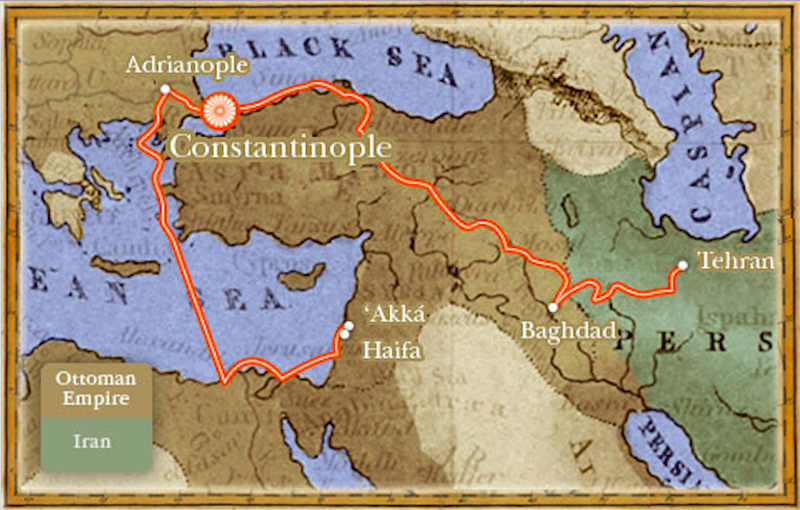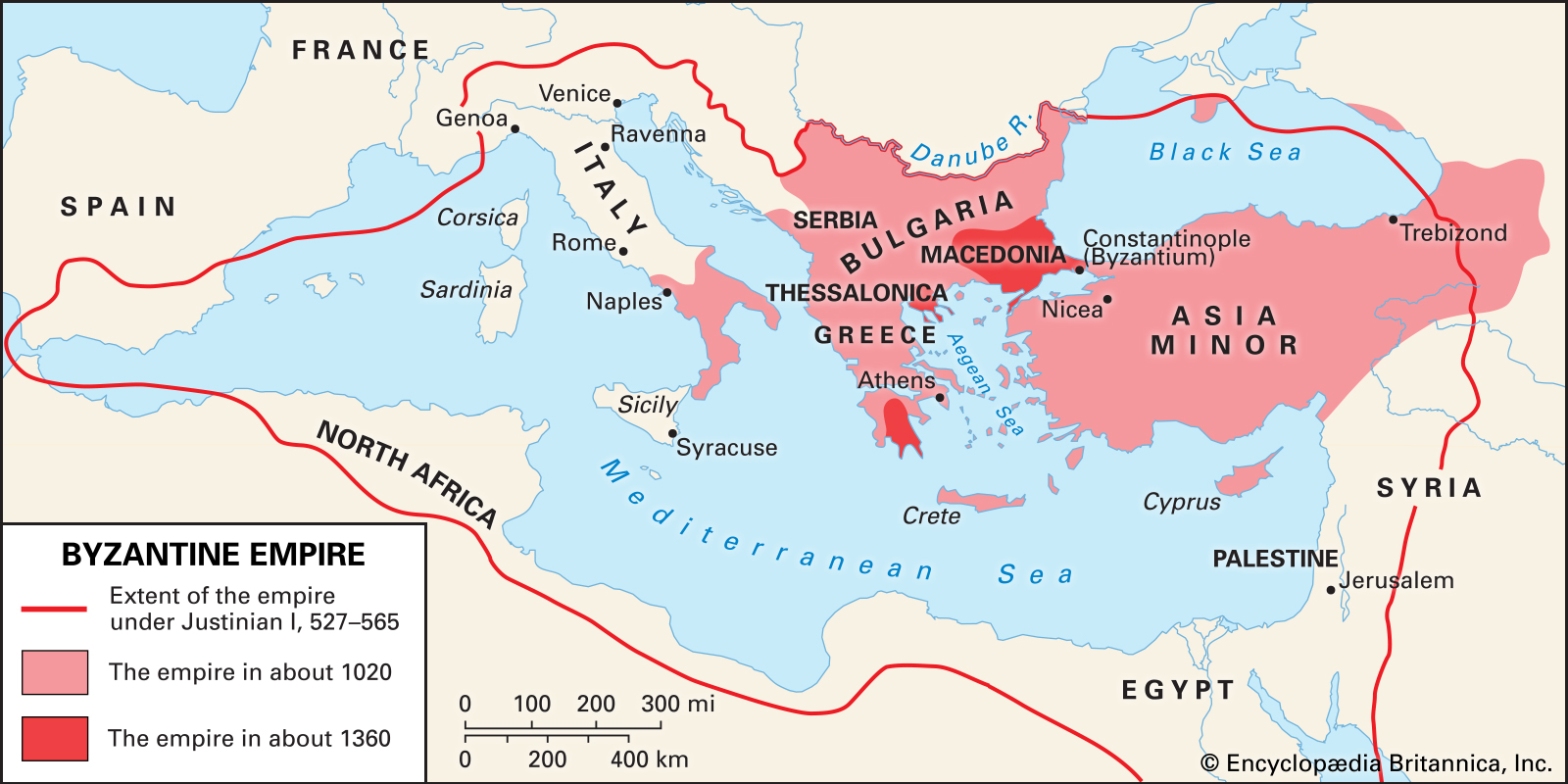Baghdad: The Unforeseen Capital of the Byzantine Empire is a fascinating historical topic that sheds light on a lesser-known aspect of ancient civilization. We often associate the Byzantine Empire with Constantinople, but did you know that for a brief period, Baghdad served as its capital? This unexpected twist in history raises many questions about the reasons behind this decision and the impact it had on the empire’s dynamics.
Baghdad’s rise as the capital of the Byzantine Empire can be attributed to its strategic location at the crossroads of major trade routes, connecting east and west. Not only did this position allow for increased economic prosperity and cultural exchange, but it also provided the empire with a crucial advantage in maintaining control over vast territories. With stunning architectural wonders, such as the Palace of the Colonnaded Courts, and a thriving intellectual scene exemplified by the House of Wisdom, Baghdad became a symbol of Byzantine power and intellectual prowess. This unexpected capital forged a unique identity for the Byzantine Empire, leaving a lasting legacy that continues to fascinate historians to this day.
Baghdad, once the capital of the Abbasid Caliphate, played an unexpected role in the history of the Byzantine Empire. With its strategic location, Baghdad became a vibrant hub of trade, culture, and knowledge. It served as a melting pot where diverse communities coexisted, fostering intellectual advancements in various fields. Byzantine scholars and merchants in Baghdad facilitated the exchange of ideas and trade between the Byzantine Empire and the Islamic world. This unforeseen connection between these civilizations had a profound impact on the development of both.

Contents
- The Cultural Renaissance of Baghdad: The Unforeseen Capital of the Byzantine Empire
- Baghdad: The Unforeseen Capital of the Byzantine Empire?
- Key Takeaways: Baghdad – The Unforeseen Capital of the Byzantine Empire
- Frequently Asked Questions
- 1. How did Baghdad become the capital of the Byzantine Empire?
- 2. What impact did Baghdad have on the Byzantine Empire?
- 3. How did the fall of Baghdad impact the Byzantine Empire?
- 4. What architectural wonders were built in Baghdad during the Byzantine era?
- 5. What were the major political achievements of the Byzantine Empire in Baghdad?
- The History Of Baghdad: The Medieval World’s Greatest City
The Cultural Renaissance of Baghdad: The Unforeseen Capital of the Byzantine Empire
Baghdad, the capital city of Iraq, is often known for its rich history and significance in Islamic civilization. However, few people are aware of its earlier role as the unforeseen capital of the Byzantine Empire. During the 6th and 7th centuries, under Byzantine rule, Baghdad underwent a cultural renaissance, becoming a center of art, science, and learning in the Eastern Mediterranean. This article explores the unique aspects of Baghdad’s Byzantine era, shedding light on a lesser-known period in the city’s history.
1. The Byzantine Influence on Baghdad’s Architecture and Urban Planning
During the Byzantine era, Baghdad witnessed a significant transformation in its architectural landscape. The Byzantines brought with them their distinctive architectural style, characterized by the fusion of Roman, Greek, and Eastern influences. The city’s structures showcased intricate mosaics, domes, and columns reminiscent of Byzantine craftsmanship.
Notable examples of Byzantine architecture in Baghdad include the Palace of Khosrow, which served as a residence for the Byzantine governors, and the Byzantine-style churches, with their ornate interiors and elaborate frescoes. The urban planning of Baghdad also underwent a change during this period, with the introduction of centralized administrative buildings and grand public spaces, such as forums and marketplaces.
These architectural and urban planning developments brought about a sense of grandeur and sophistication to Baghdad, positioning it as a cultural hub and demonstrating the Byzantine Empire’s influence on the city.
2. Education and Scholarship Flourishing in Byzantine Baghdad
One of the defining characteristics of Byzantine Baghdad was its focus on education and scholarship. The city became a renowned center for learning and intellectual pursuits, attracting scholars and philosophers from various parts of the Byzantine Empire.
The prestigious House of Wisdom, established during the Byzantine era, became a beacon of knowledge in Baghdad. This institution housed a vast library, translating and preserving ancient Greek, Roman, and Persian texts. It also fostered an environment for intellectual exchange, with scholars engaging in debates and discussions across various fields of study.
Notable scholars who resided in Byzantine Baghdad include the mathematician and astronomer Al-Kindi, who made significant contributions to the fields of mathematics and philosophy, and the renowned physician and philosopher Al-Razi. These scholars, along with many others, played a crucial role in the development of academic disciplines and the preservation of knowledge during the Byzantine era.
The cultural renaissance of Byzantine Baghdad was not only marked by architectural achievements but also by its commitment to intellectual advancement and the pursuit of knowledge.
3. Trade and Commerce in Byzantine Baghdad
Under Byzantine rule, Baghdad flourished as a center of economic activity and trade. The city’s strategic location along important trade routes facilitated the exchange of goods and ideas between the Byzantine Empire, Persia, and beyond.
Baghdad became a bustling hub of commerce, attracting merchants and traders from diverse regions. The Byzantine Empire’s influence on trade is evident in the variety of goods and products that flowed through the city, ranging from textiles and spices to precious metals and gems.
The Byzantines introduced new trading practices and technologies, such as the use of standardized currency and advanced irrigation systems, which contributed to the city’s prosperity. The commercial success of Byzantine Baghdad further enhanced its reputation as a cosmopolitan center for economic and cultural exchange.
4. The Legacy of Byzantine Baghdad
The influence of the Byzantine era in Baghdad’s history may have been overshadowed by subsequent Islamic rule, but its impact cannot be understated. The cultural renaissance brought about during this period laid the foundation for Baghdad’s future as a center of learning, art, and commerce.
Many of the architectural elements introduced by the Byzantines continued to influence subsequent Islamic architecture in the region. The emphasis on education and scholarship established during this era set the stage for Baghdad to become a great center of Islamic intellectualism in later centuries.
Today, the remnants of Byzantine Baghdad can still be found in the city’s archaeological sites and historical artifacts, serving as a reminder of its vibrant past as the unforeseen capital of the Byzantine Empire.
Baghdad: The Unforeseen Capital of the Byzantine Empire stands as a testament to the city’s resilience and ability to adapt to different cultural influences throughout its storied history.

Baghdad: The Unforeseen Capital of the Byzantine Empire?
Baghdad, the capital of modern-day Iraq, was once an unexpected capital of the Byzantine Empire. During the 7th century, the Byzantine Empire faced numerous challenges, including invasions by the Sassanian Persians and the rising power of the Islamic Caliphate. In this context, the Emperor Heraclius decided to establish a new capital in the strategic city of Baghdad.
Baghdad offered several advantages for the Byzantine Empire. Its location on the Tigris River provided access to trade routes and made it a hub for commerce. Additionally, it served as a military stronghold, allowing the Byzantine Empire to maintain control over the region. The city also had a diverse population, including Byzantines, Persians, and Arabs, fostering cultural exchange and serving as a melting pot of ideas.
However, despite these advantages, the Byzantine Empire’s control over Baghdad was short-lived. The Islamic Caliphate expanded rapidly and eventually captured the city in 637 CE, marking the end of Byzantine rule.
Key Takeaways: Baghdad – The Unforeseen Capital of the Byzantine Empire
- Baghdad became the capital of the Byzantine Empire in the 8th century.
- It was originally founded as a military camp by the Abbasid dynasty.
- Baghdad quickly grew into a major trading center and hub of intellectual activity.
- The House of Wisdom in Baghdad was renowned for its translation and preservation of ancient Greek texts.
- Baghdad’s strategic location on the Silk Road facilitated cultural exchange and economic prosperity.
Frequently Asked Questions
In this section, we will address some frequently asked questions about Baghdad, the unforeseen capital of the Byzantine Empire.
1. How did Baghdad become the capital of the Byzantine Empire?
The selection of Baghdad as the capital of the Byzantine Empire was unforeseen due to historical circumstances. After the fall of the Western Roman Empire in 476 CE, the Byzantine Empire emerged as the new center of the Roman Empire. Constantinople, located in present-day Turkey, served as its capital. However, as the empire expanded eastward, the need for a more strategically located capital arose. Baghdad, situated in Mesopotamia, offered significant advantages in terms of trade routes and proximity to critical regions. Thus, in 717 CE, Emperor Leo III took the momentous decision to shift the capital from Constantinople to Baghdad.
This move led to a new chapter in the history of the Byzantine Empire. Baghdad became a bustling center of commerce, culture, and politics, showcasing the empire’s power and influence in the eastern regions.
2. What impact did Baghdad have on the Byzantine Empire?
Baghdad’s selection as the capital had a transformative impact on the Byzantine Empire. The city’s strategic location enhanced trade connections, fostering economic growth and prosperity. The Byzantine Empire became a thriving hub of commerce, attracting merchants from various regions. This influx of trade and wealth fueled the empire’s economic expansion and facilitated technological advancements.
Furthermore, Baghdad emerged as a center for intellectual and cultural exchange. It attracted renowned scholars, artists, and philosophers from around the world, thereby enriching the empire’s intellectual and artistic achievements. This engendered a period of great cultural flowering known as the Byzantine Renaissance, characterized by significant contributions to art, literature, and science.
3. How did the fall of Baghdad impact the Byzantine Empire?
The fall of Baghdad marked a significant turning point in the history of the Byzantine Empire. In 1453 CE, the Ottoman Turks captured Constantinople, the Byzantine capital, leading to the empire’s collapse. This event had a profound impact on the Byzantine Empire, ending its thousand-year existence.
With the fall of Baghdad, the Byzantine Empire lost its vibrant center of trade, culture, and political power. The loss of access to crucial trade routes and markets had severe economic repercussions. Additionally, the empire’s intellectual and artistic achievements suffered as the nexus of scholarly and artistic activity shifted away from the region.
4. What architectural wonders were built in Baghdad during the Byzantine era?
Baghdad was renowned for its architectural wonders during the Byzantine era. One such notable structure was the House of Wisdom, a grand library and research center. It housed a vast collection of ancient texts, manuscripts, and scholarly works, making it a beacon of knowledge and intellectual advancement.
Another architectural marvel was the Great Mosque of Baghdad, a monumental structure with intricate designs and grand domes. It served as a place of worship and a symbol of the empire’s religious and cultural identity.
5. What were the major political achievements of the Byzantine Empire in Baghdad?
The Byzantine Empire achieved significant political milestones during its time in Baghdad. It established strong diplomatic relations with neighboring empires and cities, fostering alliances and maintaining stability in the region. The empire’s political influence expanded as it became a central power in the Arab world.
The Byzantine Empire also implemented administrative reforms, enhancing governance and ensuring effective administration of its territories. These political achievements solidified the empire’s control over Baghdad and the surrounding regions, contributing to its overall strength and longevity.
The History Of Baghdad: The Medieval World’s Greatest City
In summary, Baghdad’s rise as the unexpected capital of the Byzantine Empire was a significant turning point in history. The city’s strategic location, economic prosperity, and cultural contributions paved the way for its emergence as a prominent political and intellectual hub.
Baghdad’s role as the center of the Abbasid Caliphate and its influence on the development of science, art, and philosophy cannot be understated. The city’s architectural marvels, scholarly institutions, and bustling markets attracted scholars, traders, and travelers from all over the known world.